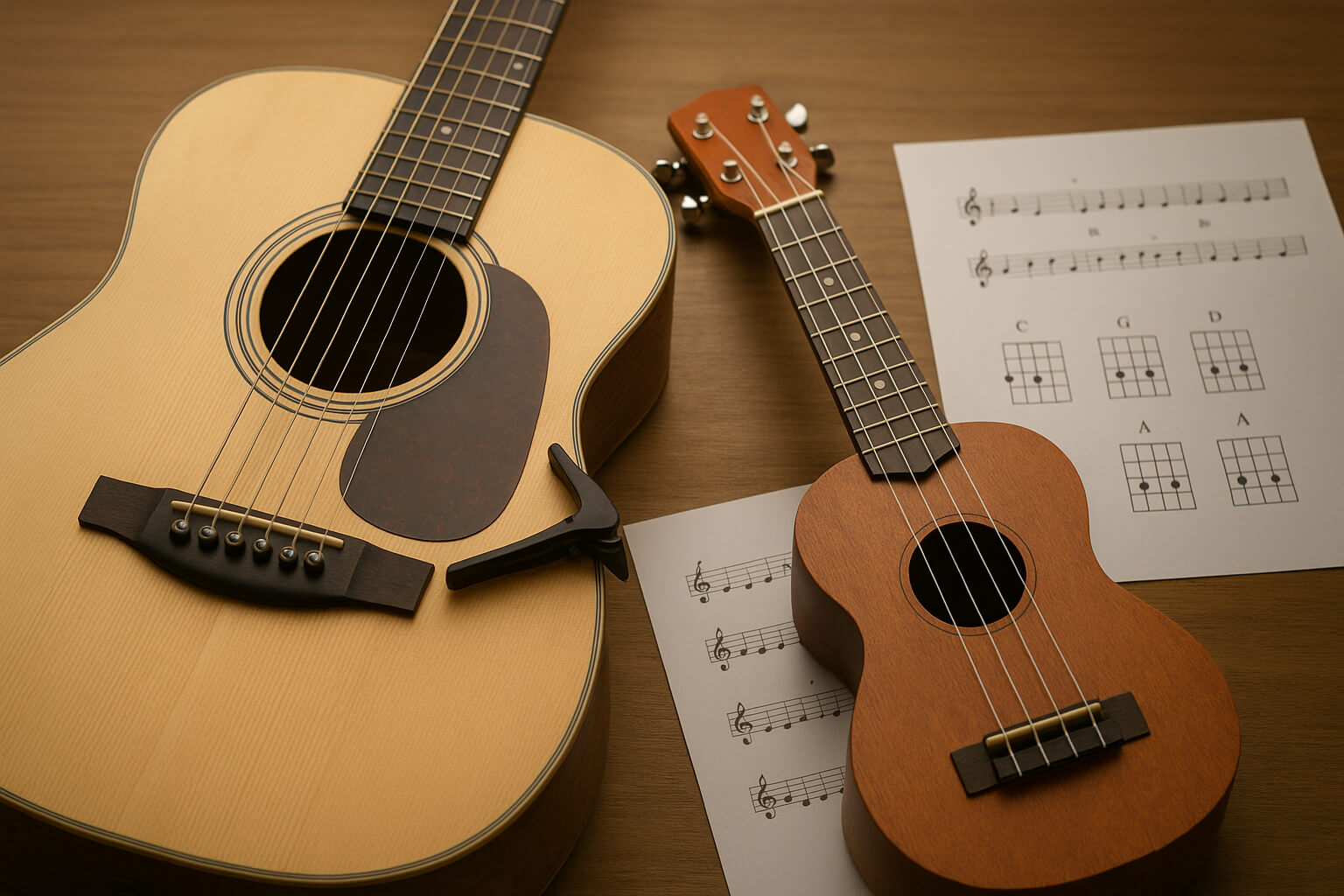How to Use a Capo on Guitar and Ukulele

A capo is a small but powerful tool for guitarists and ukulele players alike. It allows musicians to play in different keys without having to relearn chord shapes, making it an essential accessory for beginners and advanced players. In this guide, you’ll learn how to use a capo effectively, the benefits it offers, and the best techniques for both guitar and ukulele.
What Is a Capo?
A capo (short for "capotasto") is a device that clamps onto the neck of a guitar or ukulele, shortening the length of the strings and raising the pitch. By moving the capo to different frets, musicians can easily play in a higher key while using familiar chord shapes. This makes it easier to play songs in a range of keys without having to learn new fingerings. Whether you're a beginner or an experienced player, a capo is a versatile tool that opens up new possibilities for your music.
Why Should You Use a Capo? The Benefits Explained
Using a capo on your guitar or ukulele offers several key benefits:
- Simplifies Key Changes: One of the primary reasons musicians use a capo is to simplify key changes. Instead of memorizing new chord shapes for different keys, a capo allows you to use familiar open chords in any key.
- Enhances Tone: A capo can bring a brighter, crisper tone to your instrument. It can also change the resonance of the strings, giving your music a more vibrant sound.
- Supports Vocal Range: Singers often use a capo to adjust the key of a song to match their vocal range. Instead of learning new chords, singers can simply place the capo in a position that suits their voice.
- Saves Time and Effort: For beginners, a capo is a quick way to jump into playing songs without needing to learn complex fingerings or barre chords.
How to Place a Capo Correctly
Proper placement of the capo is essential for optimal sound and tuning. Follow these steps:
- Position Just Behind the Fret: Place the capo just behind the fret (not directly on it), as this will avoid buzzing or muffled notes.
- Press Evenly Across All Strings: When clamping the capo, ensure it is pressed evenly across all strings. Uneven pressure can cause some strings to sound flat or muted.
- Check Tuning: After placing the capo, check your tuning. The capo slightly increases string tension, which can affect tuning. Re-tune your instrument as necessary.
For more guidance on chord shapes and finger positioning, check out our beginner guitar chord resources or piano fretboard tutorials for a cross-instrument approach.
Capo Techniques for Guitarists
For guitarists, a capo can be used in a variety of creative ways to expand your musical range:
- Partial Capo: Use the capo on specific strings (often only a few) to create unique chord voicings and harmonic textures. This technique is popular in fingerstyle guitar and can produce interesting, open-sounding chords.
- Moving Capo: Slide the capo mid-song to shift keys smoothly. This technique allows you to seamlessly change the key of a song without having to re-finger the chords.
- Creative Chord Voicings: By combining the capo with open strings, you can create richer, more complex chord voicings. This is especially useful in genres like folk, pop, and acoustic music.
For more advanced techniques, you can explore different guitar styles to see how professional musicians use capos creatively in various genres.
Capo Techniques for Ukulele Players
For ukulele players, a capo is just as useful for expanding musical possibilities:
- Changing Keys Easily: Just like on the guitar, placing the capo on a specific fret allows you to change the key without learning new chord shapes. This is especially handy for beginners who are just starting out on the ukulele.
- Creative Voicings: Use the capo to explore new chord voicings, especially for island-inspired or tropical sounds that are characteristic of the ukulele.
- Match the Song's Energy: Pairing the capo with different strumming patterns can help you match the energy of the song. You can easily experiment with shifting the capo to different frets and adjusting your strumming to create dynamic variations in sound.
For specific ukulele capo charts and song tutorials, platforms like Ultimate Guitar offer helpful resources.
Practical Tips for Using a Capo
Here are some practical tips for getting the most out of your capo:
- Experiment with Different Frets: Don’t be afraid to experiment with capo placement at different frets to find the best sound for your song. Each fret offers a different tonal quality.
- Combine with Open Chords: For richer harmonics, try combining the capo with open chords, especially in acoustic or folk settings.
- Retune After Moving the Capo: If you’ve moved the capo, always re-check your tuning, especially if your instrument is older or has loose tuners.
- Practice Smooth Transitions: Practice moving the capo smoothly between frets during songs. This will help you maintain rhythm and keep your performance seamless.
- Check Your Capo Quality: A high-quality capo will provide a more even pressure across all strings, reducing the chances of buzzing or muted notes. Consider investing in a reliable capo for the best results.
Conclusion
- A capo is an invaluable tool for both guitarists and ukulele players. It simplifies key changes, enhances tone, and supports vocal range, making it a must-have accessory for any musician. By mastering the proper capo placement and exploring creative techniques, you can enhance your playing and add depth to your music.
- For a deeper dive into rhythm and timing, be sure to check out our article on why understanding rhythm is crucial to further refine your musical skills.
